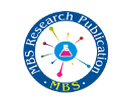Past Issue | Volume | Volume 4,Issue 7,July,2018
![]() DRUG ABUSE AMONG STREET CHILDREN (Case Study: Commercial Vans Casual Apprentices at Car Parks)
DRUG ABUSE AMONG STREET CHILDREN (Case Study: Commercial Vans Casual Apprentices at Car Parks)
Abstract:-
In The Gambia like all nations, drug abuse is seen as a social and health problem that has many serious implications for the physical, social, psychological and intellectual development of the victims more especially, the children. Therefore, it continues to be a concern to families, community leaders, educators, social workers, health care professionals, academics, government and its development partners. Though there some studies on drug abuse, there is none on children and drug abuse focusing on the street children the most vulnerable category. Street children are hypothesized to be more at risk of any epidemic including drug abuse. This study sought to determine the risk and prevalence of drug abuse among street children focusing on those in the car parks. The research was focused on six critical areas: level of knowledge of drug abuse, perception towards it, level of knowledge of the causes of it in the community and among street children, level of knowledge of negative impacts of it, level of knowledge of the preventive methods; and level of knowledge of the support services and treatments needed by victims. A structured questionnaire was used to collect the data from thirty five participants (i.e. one driver and six casual apprentices from each of the five car parks) were interviewed. The data was presented and analysed using tables and percentage. The findings revealed among other things, that there is high level of awareness of drug abuse but the feelings towards it is mixed. Like other children, street children are abusing drugs mainly due to peer influence with the ultimate objective of getting high to relief stress, group recognition, trusted by peers, etc. Similarly, participants are highly aware of the negative impacts encompassing fighting, stealing, mental illness, etc. To finance the behaviour, victims are engaged in all types of dangerous antisocial behaviour including romantic ones exposing them to a range of diseases including STIs and HIV/AIDS. Marijuana is the most commonly abused drug. Though in the minority, some have started experimenting cocaine/coke, hashish; and heroin. While participants have good knowledge of the critical methods to fight drug abuse, the support services needed by victims, victims are mostly reluctant to seek the services not only because they are hard to find but fear societal stigmatization, exclusion and discrimination and professionals‘ maltreatments.
![]() SECRET SONIC WEAPONS’ WAR LEAD TO CARCINOGENESIS
SECRET SONIC WEAPONS’ WAR LEAD TO CARCINOGENESIS
Robert Skopec, Dubnik, Slovakia, researcher-analyst,
Abstract:-
Abstract:-
Abstract:-
![]() Study of Serum Prostate-Specific Antigen in Benign and Malignant Breast Diseases
Study of Serum Prostate-Specific Antigen in Benign and Malignant Breast Diseases
Chetan Maibam1, Achom Bala Chanu2, Chinglaiphaba Chongtham* and Th Sudhir Chandra Singh3
Abstract:-
Cancer of breast is now the second most common cancer worldwide, and fifth most common cause of cancer death. Many risk factors ( like early menarchy, nulliparity, radiation exposure, family history etc) and prognostic factors of breast cancer such as lymph node status, tumour size, histological grade, oestrogen/progesterone receptor (ER/PR) status, and age are well determined. Prostate- specific Antigen (PSA) is a tumour marker used widely for the diagnosis and monitoring of prostatic adenocarcinoma. It is also being evaluated for is diagnostic and prognostic efficacy in breast diseases particularly malignancies
![]() Evaluation of Antioxidant Activities of Leaf Extract of Premna Serratifolia
Evaluation of Antioxidant Activities of Leaf Extract of Premna Serratifolia
Abstract:-
Current study aimed to analyze the antioxidant potential of various solvent extracts of Premna serrattfolia. Premna serratifolia leaves were collected from the natural habits of Chikkaballapura district, Karnataka. About 100 g dried leaves were coarsely powdered and subjected to successive extraction by Soxhlet extractor. The extraction was done with different solvents like chloroform, methanol and ethanol.
Need PHD Research Writing Help?

